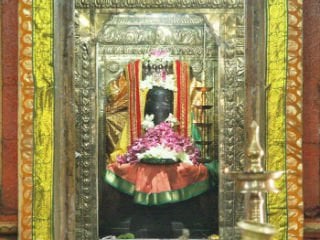The world famous ‘Baba Vaijanath Mahadev temple
from Malwa (Madhya Pradesh) with a legendary history !
Contents [hide]
- 1. Restoration of the temple done by Colonel Martin 137 years ago
- 2. Information on the temple
- 3. Origin of the temple
- 4. The original temple
- 5. Surroundings of the temple
- 6. History of restoration of the temple
- 6 A. Wife of the Commander of the Britiish Army Martin visiting the temple, her seeing the collapsed temple wall and her asking the temple priests about its renovation
- 6 B. Pandit Awasthi requesting the then Cavalry Commander Major Pandit Gopalsingh to get the temple restored
- 6 C. Martin raised the funds for the temple from lawyers of nearby establishments

1. Restoration of the temple done by Colonel Martin 137 years ago
The Baba Vaijanath Mahadev temple from Agar in Malwa is a world-famous Shiva temple. Influenced by the miracles brought about by this temple, Colonel Martin got it restored 137 years ago during the British rule. Ever since it is being developed further.
2. Information on the temple
There is a world-famous temple of Vaijnath about 4 kilometres to the north of the village of Agar in Malwa (Madhya Pradesh). People travel from far and wide villages and cities, in large numbers, to pay obeisance here. There will not be a single person in the Malwa area who does not know the miracles and legendary history of this temple. For the past 130 years, twice a year during the Hindu lunar months of Kartik and Chaitra (November and April approximately) there is a traditional pilgrimage to this temple.
3. Origin of the temple
Exact details of when this temple was built and by whom is not very clear. However as per Government records on the southern side of the mountain peak there was village called Betkheda. This had a high population of the ‘Mod’ community of traders. On Magh shukla 4, in 1564 (1528 B.C.) the foundation of this temple was laid and it was completed in 1585 (1536 B.C.).
4. The original temple
Formerly this temple was like a hermitage with a low ceiling. The walls of the temple constructed from lava stone were wide, without any open spaces or windows for ventilation. An oil lamp was kept burning in the temple day and night to give light.
5. Surroundings of the temple
As per legendary information there was thick forest surrounding the temple with ferocious wild animals such as the tiger, lion, cheetah, leopard, wolf, wild boar etc. in large numbers. For several years a small stream flows past this temple and is called the ‘Banganga’.
6. History of restoration of the temple
6 A. Wife of the Commander of the Britiish
Army Martin visiting the temple, her seeing the collapsed
temple wall and her asking the temple priests about its renovation
History also records why a Britisher restored the Vaijanath Mahdev temple. According to a legend, in 1880 British soldiers including a British Commander, Martin were sent to Kabul to fight a war. One day when riding a horse his wife happened to reach this temple. Seeing the collapsed wall of the temple she asked the priests performing puja (ritualistic worship) in the temple why it was not being rebuilt. Pandit Shivacharanlal Awasthi informed that it was due to paucity of funds and that they would be grateful if she could get it done. She promised to do so once her husband returned from the war. Hearing this the other priests there prayed for the safe return of Commander Martin.
6 B. Pandit Awasthi requesting the then Cavalry
Commander Major Pandit Gopalsingh to get the temple restored
After the British army returned from Kabul Pandit Awasthi revealed the conversation about restoration of the collapsed temple wall with the wife of Martin to the Briitsh Cavarly Commander Major Pandit Gopalsingh and requested him to do it.
6 C. Martin raised the funds for the temple from lawyers of nearby establishments
Gopalsingh discussed this issue with Martin and made great efforts for restoration of this temple. Martin also worked towards it. During those days’ embassy of Central Bharat with its office was situated in Agar. Lawyers of all big and small nearby establishments also lived here. So, Martin appealed to them to procure funds for the temple restoration from their respective establishments.

 The self-manifested temple of Shri Dhareshwar at Dhayari, Pune
The self-manifested temple of Shri Dhareshwar at Dhayari, Pune The Amarnath Yatra that bestows humans with the merit of visiting 23 holy places of...
The Amarnath Yatra that bestows humans with the merit of visiting 23 holy places of... Banteay Srei : The Deity Shiva temple in Phnom Dei village, Cambodia
Banteay Srei : The Deity Shiva temple in Phnom Dei village, Cambodia Shri Dev Kunkeshwar : The Kashi of Konkan
Shri Dev Kunkeshwar : The Kashi of Konkan Spiritual experiences of Shrichitshakti (Mrs) Anjali Gadgil after taking darshan of Shri Vaidyanatheshwar Shiva at...
Spiritual experiences of Shrichitshakti (Mrs) Anjali Gadgil after taking darshan of Shri Vaidyanatheshwar Shiva at... The Shivalinga from the Naguleswaram temple in Srilanka worshipped by Shrirama to nullify the sin...
The Shivalinga from the Naguleswaram temple in Srilanka worshipped by Shrirama to nullify the sin...